Water Sustainability
DEFINING SUSTAINABILITY AND HOW IT RELATES TO WATER AND INTERIOR DESIGN
Sustainability simply means meeting the needs of today without compromising the needs of future generations. There needs to be more balance between preserving nature and improving lifestyles. We need to be more conservative with the resources that nature provides while still advancing humans’ way of life.
Concerning water, this would mean making sure that water is still available in the same quantity and quality as was proposed. For example, if you turned a tap on in 20 years and water were to come out at the same speed and quality as today, then it would be considered sustainable.
As a designer I can incorporate water conserving elements into my designs in ways such as using various low-flow fixtures. A goal that I have as a designer is to provide clients with designs that will serve their needs, exceed their expectations, as well as preserving the earth and its resources.
SOME PROBLEMS WITH WATER AND SUSTAINABILITY
Water is one of our most precious and valuable resources. There are three major problems regarding water sustainability: quality, use efficiency, and supply. All of these issues have impacts on the environment, public health and even the economy.
There are a number of substances such as, paints, cleaning chemicals, feminine products, and virtually anything that is flushed down a toilet or down a drain. These substances are joined with household wastes and clumped under the category of “sewage.” Sewage is only supposed to contain wastewater that is contaminated with urine and feces, and is treated as such. The so-called “sewage” is then screened so that solid particles are extracted from the wastewater and the liquid carries on through the rest of the treatment. Since all of these items can pass through the screens they can end up flowing into rivers or the ocean and can be washed onto beaches. The book Cradle to Cradle states that, “It wasn’t until the late nineteenth century that people began to make the connection between sanitation and public health.” When we are decreasing our quality of water we are not paying the price later; we are, in stead, paying the price right now with our health, environment and economy.
Any polluted water that returns back into the environment causes damage to the environment as well as human health, whether it comes from households, industries, or agriculture. While both world population and freshwater demand are increasing, the supply remains the same. We are faced with the possibilities of higher rates and/or water use restrictions. Use efficiency is affected by the amount and type of water that appliances and fixtures use. Consumers’ behavior patterns also contribute to water resource concerns.
SOLUTIONS THAT ARE CURRENTLY AVAILABLE
The efficient use of water can be attained by using elements in our designs that save water, and using correct maintenance throughout the lifecycle of a space. Improving efficiency will help to minimize the dependence of water supplements.
Approximately 7% of water use in the home is from the kitchen, and from 1-48% in a variety of commercial and industrial settings. Many appliances are available that will help conserve water in kitchen areas. A lot of them can be installed after construction as well as during. If conservation practices are continued in the kitchen, an essential part of managing water demand will be fulfilled.
Sinks that have both a shallow and deep basin that optimize the use of water are great because this type of sink encourages the user to conserve water by choosing the shallow sink for smaller jobs.
 Replacing existing fixtures and appliances with ones that conserve water is one of the easiest and least-interfering ways to reduce water use. Low-flow faucets simply restrict the flow of water. They are relatively inexpensive, ranging in price from $50 to $250 and can save up to 80%.
Replacing existing fixtures and appliances with ones that conserve water is one of the easiest and least-interfering ways to reduce water use. Low-flow faucets simply restrict the flow of water. They are relatively inexpensive, ranging in price from $50 to $250 and can save up to 80%.  Low-flow faucet aerators mix air with water to create a spraying motion. Compared to traditional faucets, aerators reduce water use by half. Aerators are a good option for kitchen sinks because they are easy to use, inexpensive ($0.50-$3.00), and most importantly they save water.
Low-flow faucet aerators mix air with water to create a spraying motion. Compared to traditional faucets, aerators reduce water use by half. Aerators are a good option for kitchen sinks because they are easy to use, inexpensive ($0.50-$3.00), and most importantly they save water.  Automatic faucets are great because by using infrared sensors to signal the flow of water they will only run when needed, saving a lot of water that is typically wasted while brushing teeth or washing dishes. These touch-less controls also help in improving hygiene.
Automatic faucets are great because by using infrared sensors to signal the flow of water they will only run when needed, saving a lot of water that is typically wasted while brushing teeth or washing dishes. These touch-less controls also help in improving hygiene. 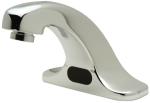 Leaks can waste a lot of water and can be very costly. National estimates, found from the College of Agriculture at the University of Kentucky, show that as much as 10% of the water in public systems is lost due to leaks in pipes during distribution or leaks in home pipes. Up to 25 gallons of water can be wasted by a dripping faucet each day. To check for leaks, everything that uses water needs to be turned off. Then, check the water meter dial and if it is still moving that indicates there is a leak. Toilets are one of the most common sources of water leaks in the home. To check the toilet for leaks you can put a couple drops of dye into the tank and after about an hour if the color shows up in the bowl there is a leak.
Leaks can waste a lot of water and can be very costly. National estimates, found from the College of Agriculture at the University of Kentucky, show that as much as 10% of the water in public systems is lost due to leaks in pipes during distribution or leaks in home pipes. Up to 25 gallons of water can be wasted by a dripping faucet each day. To check for leaks, everything that uses water needs to be turned off. Then, check the water meter dial and if it is still moving that indicates there is a leak. Toilets are one of the most common sources of water leaks in the home. To check the toilet for leaks you can put a couple drops of dye into the tank and after about an hour if the color shows up in the bowl there is a leak.In most facilitates, toilets use the majority of the water supply. With today’s standard toilet, one flush uses 3.5-5.5 gallons of water. Using low-flow toilets the amount of water used goes down to 1.6 gallons per flush. Most building codes require this flush rate.
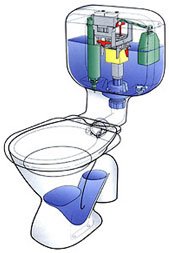
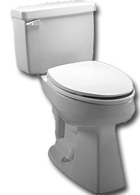
The waterless urinal is the newest device that conserves water. It operates without water or a flush valve. You might have the same question that I did, “how do you control odors that water was previously used to eliminate?” The urinals use traps, located internally, that are filled with a liquid that is lighter than urine that forms a barrier. The liquid runs off special surfaces that do not allow any urine deposits to be left behind. Typically facilities utilizing this type of urinal can save up to 44,000 gallons of water a year. 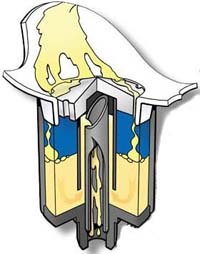
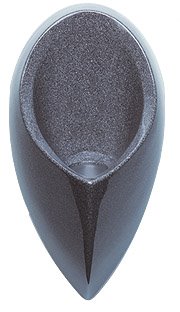
The location of water heaters can make a big difference in conserving water in the home as well. Water heaters located near the point of use are beneficial because approximately 40 gallons of water go down the drain each day while waiting for hot water to come to the tap.
AREAS THAT NEED MORE EXPLORATION ABOUT WATER SUSTAINABILITY
Some key issues that need more exploration regarding water sustainability include: making the public educated in ways that they can help in making water more sustainable, and also coming up with more effective ways to increase the efficiency and conservation of water. We must look for ways to reduce the use of water without getting in the way of or slowing operations. Not being able to balance the needs of humans with those of the natural world is where our water problems come from. How to create more balance between the two requires more research and exploration.
CONCLUSIONS THAT I HAVE FOUND THAT I CAN TAKE ON PERSONALLY
I have become more aware through my research of the sustainability of water as to what a major issue it is in the world today. If the population and demand for water keep growing we will continue to draw closer to the limit of our water resource. Something must be done now. I have concluded that the difference I can make is to moderate my use of water and incorporate water conserving elements into my designs, such as low flow faucets and aerators, low flow toilets and waterless urinals. Leaks need to be fixed, low water use fixtures could be installed and altering behavior are all ways that help in conserving water. I have mentioned ways that the quality of water can be maintained. Various cost efficient ways to conserve water have been mentioned as well. The quality of water is in our control, how efficiently we use water is up to us. So let’s take control and sustain the precious resource, water. _____________________________________________________
Sources:
http://www.ca.uky.edu/enri/consrv
Cradle to Cradle –William McDonough & Michael Braungart
http://www.epa.gov/owm/water-efficiency/
http://www.facilitiesnet.com/ms/article.asp?id=2297
http://www.green-living.com/nav/products.html
http://www.pacinst.org/topics/water_and_sustainability/
http://www.ph.unito.it/dfg/ricerca/geofit/igu/igu_story.html http://www.sustainabilityproject.org/pdfs/5water.pdf

3 Comments:
Very interesting material here. Heh, I like the waterless urinal . . . Also the low-flow options are impressive, especially because of their low cost. Thanks a bunch for this info!
Excellent report Whitney! I really learned a lot from it. Regarding you comments on water waste and water pollution… it is amazing how it relates to my topic, energy. How? Because a lot of the electricity that is produced today is used in supplying us with clean water and then cleaning it up after it’s been used. So being responsible with our water use will not only assure we will continue to have an abundant supply of it, but it will also help us save energy. Anyway, thanks for all the great info.
http://www.energyquest.ca.gov/saving_energy/index.html
Whitney,
I like how you've shown which products currently help with the solution by allowing people choice between using a lot or a little of water depending on their needs. Is there another water use product or appliance in the home that currently could benefit from something like the technology used in the toilet or an automated system like the sink, etc? Or have you thought of an idea of your own that could apply to a new object? Have some ideas ready for when you are in London!
Corrine
Post a Comment
<< Home